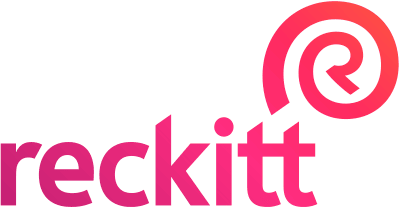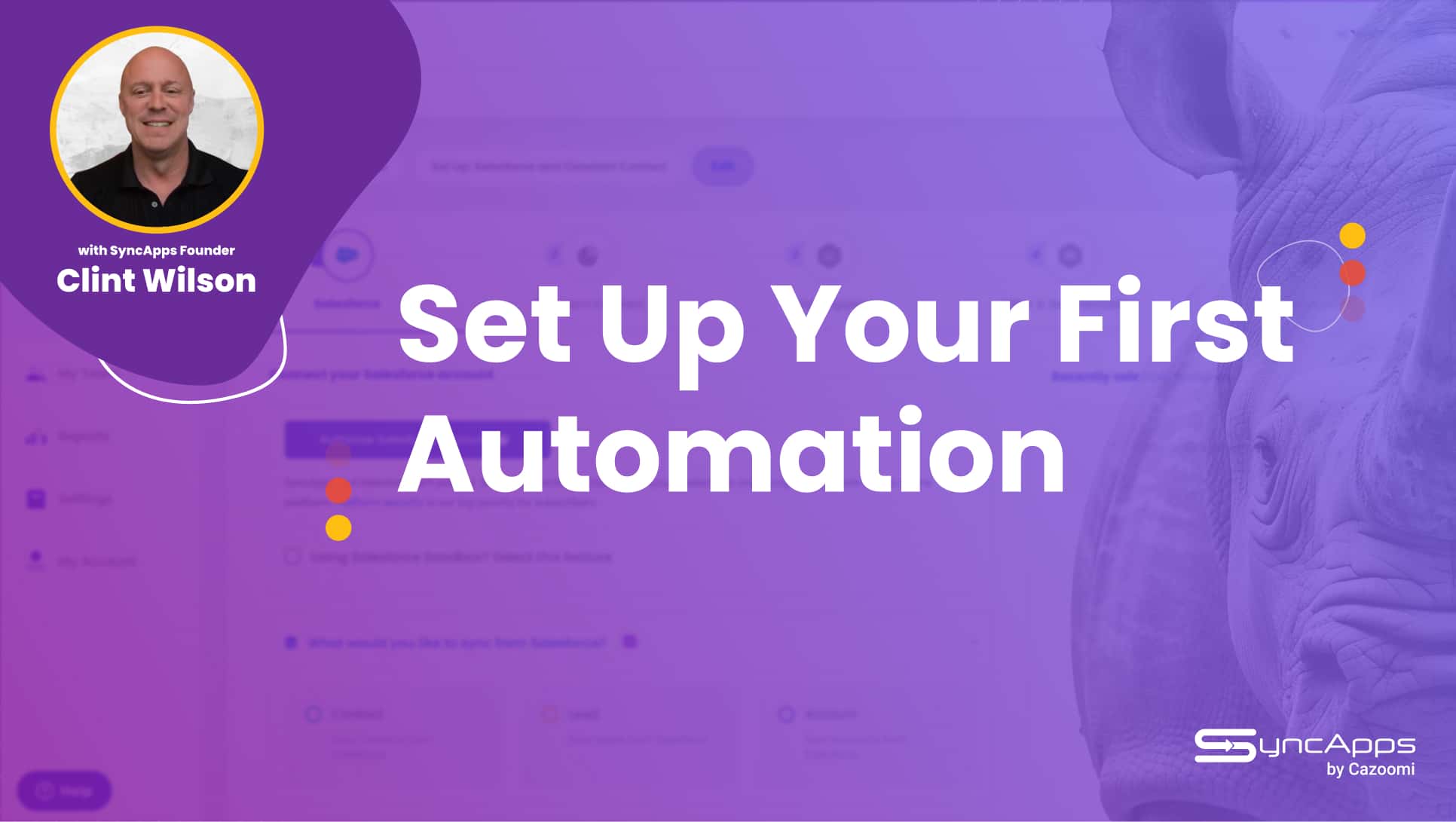Your eCommerce Glossary: 130+ Terms You Need to Know
Welcome to the wonderfully perplexing world of eCommerce! If you’re trying to navigate this vast landscape filled with buzzwords, acronyms, and digital jargon, you’re not alone.
Even seasoned online retailers occasionally feel like they’ve wandered into a foreign language class. Fear not! This eCommerce glossary is here to help you decode the lingo, making your journey smoother and perhaps even a bit more entertaining.
Whether you’re a bright-eyed entrepreneur opening your first online store or a savvy business owner looking to polish your knowledge, understanding these terms is crucial. Knowing the vocabulary not only helps you communicate effectively but also empowers you to make informed decisions that can lead to increased sales and happier customers.
So, sit back, grab your favorite caffeinated beverage, and let’s dive into this comprehensive eCommerce glossary — a treasure trove of over 130 essential terms every online retailer should know.
Pro tip: bookmark this page in case you need to come back to it later. You don’t have to memorize this entire eCommerce glossary in a single sitting.
A Comprehensive eCommerce Glossary — 130+ Terms You’ll Hear in This Industry
- A/B Testing
A method where two versions of a webpage, an email, an ad creative, or anything similar are compared to see which performs better. Think of it as a race between two websites to see which one can win over more visitors.
- Abandoned Cart
When a customer adds items to their cart but leaves without buying. Almost 70% of buyers abandon their carts, so you’ll hear this one frequently.
- Affiliate Marketing
A performance-based marketing strategy where you pay others (known as “affiliates”) to promote your products. Typically, it’s a percentage-based commission.
- Augmented Reality (AR)
A technology that overlays digital information onto the real world. In eCommerce, it can help customers visualize products in their own space. For instance, they can test how a new sofa would look into their living room using AR.
- Average Order Value (AOV)
The average amount spent per transaction. Increasing the AOV is a common concern in eCommerce because it’s always easier to sell more to an existing customer than to acquire a new one.
- Backorder
An order placed for a product that’s currently out of stock but will be shipped when available. It’s like waiting for that limited edition toy — worth the wait, right?
- Behavioral Targeting
A marketing strategy that tailors ads based on user behavior. For instance, if a user keeps looking at car accessories, you can target them with ads for the car accessories your online store sells.
- Brand Awareness
How well your brand is recognized by potential customers. It’s like being the popular kid in school but in the world of eCommerce.
- Brand Equity
The value a brand adds to a product based on consumer perception. Some items are more expensive if bought at Whole Foods than Walmart, even if they are identical.
- B2B (Business to Business)
Transactions conducted between businesses, rather than between businesses and consumers. In eCommerce, it’s when you sell products to another business.
- B2C (Business to Consumer)
Sales directly from a business to a consumer, which is what most people think of when they hear “eCommerce.” It’s the classic retail setup.
- Call to Action (CTA)
A prompt on your website encouraging visitors to take a specific action. Think of it as your friendly nudge to get people to buy, subscribe, or click. You’ll see them shaped as buttons or simple text with a link.
- Cart Recovery
Techniques used to bring back customers who have abandoned their carts. Usually, it’s an email or an email sequence reminding them to complete the order. You can add a discount to make them more likely to come back. Alternatively, you can use retargeting ads for this.
- Channel Conflict
A situation where different sales channels compete against each other. Think of it as your online store and your brick-and-mortar shop having a sibling rivalry.
- Checkout Abandonment Rate
The percentage of shoppers who leave the checkout process without completing their purchase.
- Click and Collect
A service that allows customers to order online and pick up their items in-store. It’s the best of both worlds — convenience and immediate gratification.
- Click-Through Rate (CTR)
A metric measuring how often people click on your ads or links in emails compared to how many times they were shown. A higher CTR means you’re doing something right.
- Conversion Rate
The percentage of visitors who complete a desired action on your site, such as making a purchase. Higher rates are what every retailer dreams of.
- Cost Per Acquisition (CPA)
The total cost of acquiring a new customer, including marketing expenses. The lower, the better.
- Cost Per Click (CPC)
The amount you pay for each click on your ad.
- Cross-Selling
Encouraging customers to buy related or complementary items. For instance, when someone buys a phone, you can cross-sell them a phone case that matches it.
- Crowdsourcing
Getting ideas, services, or content from a large group of people, often through the internet. It’s like having a brainstorming session with the entire world. For example, you could crowdsource your next logo when you want to do a rebranding of your online store.
- Customer Acquisition Cost (CAC)
The total cost of acquiring a new customer. Keep this as low as possible — your budget will thank you!
- Customer Experience (CX)
The overall perception customers have of your brand based on their interactions with your website, customer support, social media, and more. Good CX means happy customers; bad CX means they might run for the hills!
- Customer Feedback
Information provided by customers about their experiences and satisfaction levels. You can ask them to leave you private reviews or reviews on third-party websites like Yelp.
- Customer Journey
The complete experience a customer has with your brand, from awareness to purchase and post-purchase.
- Customer Lifetime Value (CLV)
A projection of the total revenue a customer will generate during their entire relationship with your brand. The higher, the better.
- Customer Relationship Management (CRM)
A CRM (Customer Relationship Management) system is software that helps businesses manage customer interactions, streamline processes, and analyze data to improve relationships, enhance customer satisfaction, and drive sales growth.
- Customer Segmentation
Dividing your customer base into groups based on shared characteristics, allowing for more targeted marketing. Popular segmentation criteria in eCommerce are: previous purchases, location, purchase frequency, and others.
- Delivery Time
The time it takes for an order to be delivered after a purchase. Quick deliveries can lead to happy customers; slow ones may leave them grumbling.
- Digital Marketing
The promotion of products or services using digital channels, including social media, email, and search engines.
- Digital Wallet
A virtual wallet that stores payment information and passwords for various accounts, allowing for quicker and easier transactions. In eCommerce, a digital wallet can also be an account that buyers top up with money to be used when shopping on your website.
- Discount Code
A code that customers can enter to receive a discount on their purchase.
- Drop Shipping
A retail fulfillment method where you sell products without stocking them yourself. You sell it, and someone else ships it. You’re only in charge of promoting the products and customer service; typically, the manufacturer handles the fulfillment. 3PL can also come into play here for the order fulfillment method, where an ecommerce website relies on a third-party fulfillment company to take care of the warehousing, packaging, and shipping of an order.
- Dynamic Content
Content that changes based on user behavior or preferences. For example, you can show a specific category of products on the home page to users who have shown interest in it previously.
- Dynamic Pricing
A strategy that adjusts prices in real time based on various factors, like demand for a product, stocks, time of the year, quantity bought, and so on. For instance, you can offer a discount if someone buys 10+ pieces of the same product or increase the price if the demand increases.
- eCommerce Analytics
The analysis of online shopping data to measure performance and optimize sales strategies.
- eCommerce Integration
The process of connecting your eCommerce platform with other software applications to streamline operations.
Integration is precisely what we do at SyncApps. Check out available integrations for eCommerce here.
- eCommerce Platform
The software that enables you to create and manage an online store. It’s like the backbone of your digital business.
- Email Automation
The use of software to send emails automatically based on specific triggers, making it easier to keep in touch with customers without the manual work. Example: the order confirmation emails that are triggered automatically as soon as a buyer places an order.
- Email Marketing
Using email to promote products or services. Email marketing includes newsletters, campaigns, welcome sequences, even order confirmation emails.
By the way, is your email marketing platform connected to your CRM or ERP? If not, you may be losing clients. Learn how eCommerce leaders use integration to increase their sales from this free guide.
- Engagement Rate
A metric that measures the level of interaction users have with your content, calculated through likes, shares, comments, and clicks. High engagement means people care and that your content resonates with them.
- Exit Intent Popup
A popup that appears when a user is about to leave a site, often offering discounts or promotions to keep them engaged.
- Exit Rate
The percentage of visitors who leave your site from a specific page. A high exit rate could mean that page isn’t pulling its weight, so it might be time for a makeover!
- Freemium
A business model that offers basic services for free while charging for premium features.
- Freight Forwarding
The process of organizing the shipment of goods from one place to another, often involving multiple carriers.
- Fulfillment Center
A warehouse that manages the storage, packing, and shipping of products.
- Fulfillment
The process of receiving, processing, and delivering customer orders. It’s the logistics behind the curtain that keeps everything running smoothly.
- Fulfillment By Amazon (FBA)
A service that allows sellers to store their products in Amazon’s warehouses, with Amazon handling storage, packaging, and shipping.
- Gamification
The use of game-like elements to engage users. Tiered loyalty programs are a good example here: you can encourage shoppers to buy more to hit the next tier and unlock new rewards.
Trusted by brands around the globe Join them
- Gateway API
A set of protocols that allows different systems to communicate with payment gateways. It’s the bridge that connects your website to the payment system.
- Geofencing
A location-based service that triggers a response when a device enters or exits a predefined geographic area. Perfect for sending localized ads to customers.
- Geotargeting
Delivering content or advertisements to users based on their geographic location. Geotargeting allows you to target shoppers close by and promote same-day delivery, for instance.
- Google Ads
An online advertising platform that allows you to create ads that appear on Google Search. For instance, if you’re selling phones, you can pay to have your website listed first when a user searches for “iPhone 16”.
- Impressions
The number of times an ad is displayed, regardless of whether it’s clicked on or not. Higher impressions mean more eyes are on your product.
- Influencer
An individual who has the power to affect the purchasing decisions of others because of their authority, knowledge, position, or relationship with their audience.
- Influencer Marketing
Collaborating with social media influencers to promote your products. You can pay them a flat fee or a commission from the sales they generate.
- Inventory Management
The supervision of stock levels and orders. Because running out of your best-selling item is never a good look. With inventory management, you always know which products are in stock and which are about to run out or have already run out.
- Inventory Turnover
A measure of how many times inventory is sold and replaced over a period. The faster your inventory turns, the more sales you’ve made.
- Key Performance Indicators (KPIs)
Quantifiable measures used to evaluate the success of an organization in meeting objectives. KPIs help keep your business on track. Common KPIs in eCommerce include: AOV (see above), LTV (see below), ROI (see below), and others.
- Keyword Research
The practice of discovering what search terms people are using to find your products or products that are similar to yours. Our keyword research, for example, revealed that eCommerce glossary is a term you might be looking for.
- Landing Page
A web page designed specifically for a marketing campaign, aimed at converting visitors into customers. It’s like the red carpet for your marketing efforts.
- Landing Page Optimization
The process of improving elements on a landing page to increase conversion rates — CTAs, colors, pictures, and more. Think of it as sprucing up your home before showing it to potential buyers.
- Last-Mile Delivery
The final step in the delivery process, transporting goods from a transportation hub to the final destination.
- Lead Generation
The process of attracting and converting strangers into potential customers. For example, someone who subscribes to your newsletter is a lead, someone you need to convert into a buyer.
- Lifetime Value (LTV)
An estimate of how much revenue a customer will generate during their relationship with your business. The longer they stick around, the better for your bottom line.
- Localization
Adapting your content to meet the language, cultural, and other requirements of a specific market. It’s a common tactic when you expand to new markets.
- Markdown
A pricing strategy that indicates a reduction in the price of a product. It’s a fancy way of saying “sale!” and customers love it.
- Marketplace
An online platform where multiple vendors sell their products. Amazon, Etsy, and eBay are the biggest marketplaces in the world.
- Mobile Commerce (mCommerce)
Buying and selling goods via mobile devices, either through apps or through mobile-optimized websites. Over 70% of sales are happening via a mobile device now, so this is an important term in our eCommerce glossary.
- Mobile Optimization
Ensuring that your website is fully functional on mobile devices. In a world where everyone’s glued to their phones, this is non-negotiable.
- Multichannel Retailing
Selling products through multiple channels, like online, in-store, and social media.
- Net Promoter Score (NPS)
A metric used to gauge customer loyalty by asking how likely they are to recommend your brand to others. It’s the litmus test of customer satisfaction.
- Omnichannel Marketing
A strategy that provides a seamless customer experience across all the channels you use for marketing: website, social media, offline activities, and so on.
- Order Fulfillment
The process of receiving, processing, and delivering orders to customers.
- Order Management System (OMS)
Software that helps businesses manage orders, inventory, and fulfillment processes. It’s the control center of your operations.
- Payment Gateway
A service that processes credit card payments for online retailers. It’s the secure lock on your digital cash register.
- Pay-Per-Click (PPC)
An online advertising model where you pay for each click on your ad. Make sure those clicks lead to something other than just curiosity.
- Payment Processing
The handling of payment transactions, ensuring funds are transferred securely from customers to merchants.
- Payment Terms
The conditions under which a buyer will make a payment to a seller. In eCommerce, you can accept online payments, payment on delivery, and others.
- Personalization
Tailoring customer experiences based on their preferences and behavior. For instance, if someone buys cat food from your online pet store, it makes no sense to target them with email campaigns promoting toys for dogs.
- Product Bundling
Offering multiple products for sale as a single combined unit. It’s a savvy way to encourage customers to buy more while feeling like they’re getting a deal! For example, you can bundle a phone and a phone case together or pillows and pillow cases.
- Product Catalog
A collection of products offered for sale, typically displayed on your website.
- Profit Margin
The difference between revenue and costs, expressed as a percentage. Higher margins mean more profits.
- Promotional Campaign
A marketing initiative aimed at boosting sales for a specific product or service. Black Friday campaigns are a good example here.
- Quality Assurance (QA)
A systematic process to ensure products meet certain standards before reaching the customer. You can do quality assurance for both products and assets, like your website.
- Recurring Revenue
The portion of your revenue that comes from subscriptions or contracts, providing a steady income stream.
- Referral Marketing
Encouraging existing customers to refer new ones, often through incentives.
- Referral Program
A strategy that rewards existing customers for referring new customers to your business. The rewards can be free products, discounts, vouchers, and more. In other words, the program is the way you implement referral marketing.
- Remarketing
A strategy that targets ads to users who have previously visited your site and left without making a purchase. You can retarget them with ads showing the same product they viewed and you can also include a discount to get them to come back.
- Return on Investment (ROI)
A measure of the profitability of an investment. You want this to be a positive number. Example: a 20% ROI means that, for every $100 you invested in, say, ads, you got $120 back.
- Return Policy
Guidelines on how customers can return items, including time limits and conditions. A good return policy can turn an undecided viewer into a buyer.
- Returns Management
The process of handling product returns efficiently and effectively, along with the conditions: what is the timeframe in which returns are accepted, who pays for shipping the returned products, how long until you give the customers who return products their money back, and so on.
- Sales Forecasting
The process of estimating future sales based on historical data and market trends.
- Sales Funnel
The journey a customer takes from awareness to purchase, moving through ads, product pages, emails, and so on.
- Search Engine Results Page (SERP)
The page displayed by a search engine in response to a query, showcasing a list of relevant results.
- Search Engine Results Page (SERP) Features
Additional elements on search results pages, such as featured snippets and knowledge panels.
- Search Engine Optimization (SEO)
The practice of optimizing your website to rank higher in search results pages. If someone searches for something you sell, you want your website to be among the first results.
- Search Engine Marketing (SEM)
Promoting your website through paid advertising on search engines. It’s SEO’s paid counterpart — if you can’t rank organically, you can pay to be listed in the ads section for relevant keywords.
- Session Duration
The average time a visitor spends on your website. Longer sessions usually indicate that people are interested in buying.
- Shipping Costs
Fees associated with delivering products to customers. These can make or break a sale, so keep them reasonable.
- Shipping Label
A label attached to a package that includes shipping information. It’s the sticker that helps ensure your package doesn’t go on an unexpected vacation.
- Social Media Marketing
The use of social media platforms to promote products and engage with customers. It’s where you can show off your products while interacting with your fans.
- Social Media Optimization (SMO)
The use of social media to manage and grow your online presence. It involves optimizing your profile’s description, photos, and engagement strategy.
- Social Proof
The idea that people will follow the actions of others. Reviews and testimonials are social proof — the proof that others have bought and enjoyed your products.
- Spam
Unsolicited or irrelevant messages sent over the internet, often in bulk. If your emails are marked as spam, you need to revisit your email strategy and settings.
- Stock Availability
The status indicating whether a product is in stock and ready for purchase. Knowing this prevents customer dissatisfaction when they can’t find their favorite item.
- Stock Keeping Unit (SKU)
A unique identifier for each distinct product in inventory, like a product’s social security number.
- Supply Chain
The entire process of producing and delivering a product, from raw materials to the final customer.
- Supply Chain Management (SCM)
The oversight of materials, information, and finances as they move from supplier to manufacturer to wholesaler to retailer to consumer.
- Target Audience
The specific group of consumers you want to reach with your marketing efforts. Your target audience includes elements like: location, age, gender, income level, and more.
- Targeted Advertising
Ads that are directed toward specific audiences based on their interests and behaviors. Example: you use Facebook Ads targeted at people who have previously interacted with your competitors’ pages.
- Third-Party Logistics (3PL)
A service that allows businesses to outsource logistics, including warehousing and shipping.
- Transaction Confirmation
A notification sent to a customer after completing a transaction. It’s a simple message notifying them that the money was withdrawn from their account.
- Transaction Fee
A fee charged by payment processors for handling transactions.
- Trust Signals
Elements that enhance a website’s credibility, like customer reviews and security badges.
- User Experience (UX)
The overall experience a user has on your website. You want visitors to feel like they’re on vacation, not stuck in a traffic jam.
- User Interface (UI)
The design and layout of your website or application. A beautiful UI makes people want to stay and shop.
- Upselling
Encouraging customers to purchase more expensive items or upgrades. For instance, if someone buys a linen set from your website, you can offer them a more expensive one with or without a discount.
- User Experience Design (UXD)
The process of enhancing user satisfaction by improving the usability and accessibility of a product or of an eCommerce website or app.
- User-Generated Content (UGC)
Content created by users, often in the form of reviews or social media posts, showcasing their experiences with your products.
- Value-Added Services
Services offered beyond the basic product or service that enhance the customer experience. For example, offering assembly services when you sell furniture.
- Value Proposition
A statement that summarizes why a consumer should choose your product over others. It’s similar to an elevator pitch.
- Vendor
A person or company that sells goods or services.
- Virtual Assistant
Software that uses artificial intelligence to assist users in completing tasks. Alternatively, it can refer to people doing an assistant’s job remotely (hence the “virtual” part).
- Virtual Reality (VR)
A simulated experience that can be similar or completely different from the real world. In retail, it can be a way to enhance the shopping experience.
- Virtual Shopping Cart
An online feature that allows customers to select and save items for purchase. It’s like having a personal assistant for your shopping.
- Webinar
An online seminar or presentation, often used for marketing or training purposes. It’s a great way to connect with your audience and present your products yourself.
- Website Analytics
The measurement and analysis of web data to understand visitor behavior: clicks, traffic sources, session duration, time spent on page, and more. Google Analytics is the most commonly used platform for website analytics.
- Wholesale
Selling goods in large quantities at lower prices, typically to retailers.
- Wishlist
A feature that allows customers to save items they want to buy later. Because sometimes you need a little more time to decide.
- Wireframe
A visual representation of a website’s layout, acting as a blueprint. It’s the first draft of your online store, minus the messy notes.
- Wishlist
A feature that allows customers to save products they’re interested in for future purchases without the need to add it to the cart.
- XML Sitemap
A file that lists a website’s URLs, helping search engines crawl and index the site more effectively. Think of it as your website’s roadmap for Google.
- Year-over-Year (YoY) Growth
A comparison of a company’s performance between one year and the next. It’s how you measure your business’s growth over time.
- Zero Party Data
Data that customers intentionally share with a business, such as preferences and purchase intentions. They typically do so in order for the business to give them personalized experiences.
- Zoning
The practice of targeting specific geographic areas for marketing efforts. For example, you can target rich areas in certain cities with ads for your premium products.
Conclusion: eCommerce Glossary
As we round up this eCommerce glossary, please remember to bookmark it and return to it whenever you need a refresher course. Plus, since this industry is constantly changing, we will be updating this eCommerce glossary constantly. You never know when there’s a new acronym you need to understand!




















